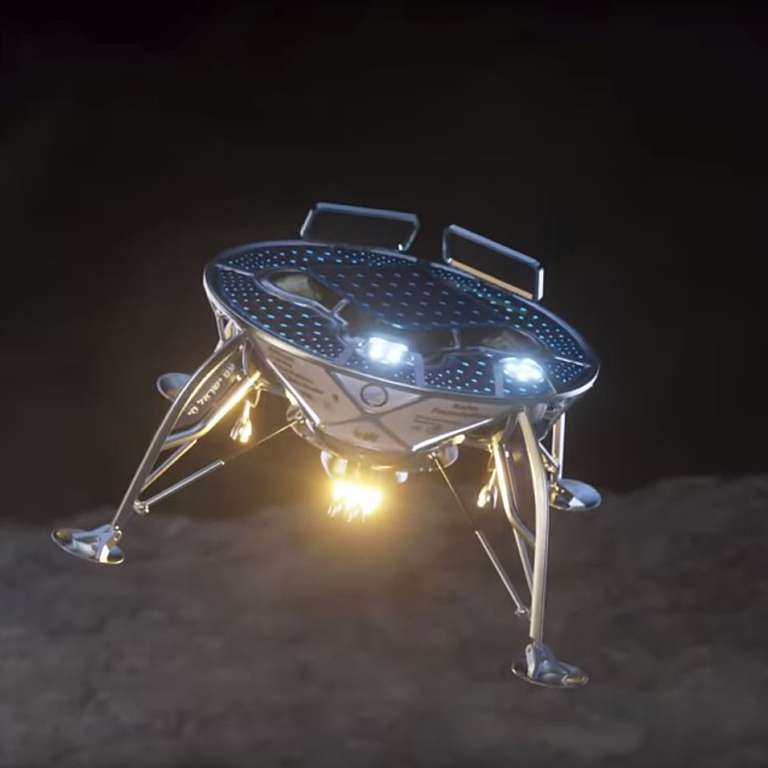Jason Davis • Feb 28, 2019
Beresheet Overcomes Early Glitches, Continues Journey to the Moon
The Israeli Moon lander Beresheet has overcome two early mission glitches and remains on schedule to arrive in lunar orbit on 4 April. The spacecraft performed its second engine burn today at 19:30 UTC (14:30 EST), raising the highest point of its orbit to about 131,000 kilometers — more than a third of the way to the Moon.
"It's quite normal for a new spacecraft to have some teething problems in its first days, and we've overcome them all," said Opher Doron, the space division general manager at Israel Aerospace Industries, in audio from a press briefing provided by SpaceIL, the non-profit running the mission. "We are quite happy, and the Moon seems to be getting within reach."
Beresheet1, a private Israeli Moon mission
Beresheet1 was a private Moon lander by Israeli non-profit SpaceIL that crashed on the surface in 2019.
News brief
SpaceX's Falcon 9 rocket dropped Beresheet off in its preliminary orbit about 34 minutes after liftoff on 22 February. It was Beresheet's job to get to the Moon from there, gradually raising its orbit over a 40-day period until it could be captured by lunar gravity. The spacecraft's orbit-raising burns take place at apogee and perigee—the high and low points of its orbit around the Earth.
Right after launch, engineers noticed a problem with Beresheet's star tracker. The star tracker is basically a camera, and that camera has a visor to prevent it from getting blinded by the Sun's rays. Something happened to the visor, as SpaceIL senior engineer Yoav Landsman explains in this video:
The team was able to work around that problem, and at 11:29 UTC (06:29 EST) on 24 February, Beresheet fired its main engine for 30 seconds at apogee, raising the spacecraft's perigee to 600 kilometers, according to a SpaceIL press release. One problem solved! But alas, just before another burn at perigee, which would have raised the spacecraft's apogee, Beresheet had another glitch:
During a pre-maneuver phase of #Beresheet, the spacecraft computer reset unexpectedly, and it was automatically canceled. The engineering teams are analyzing the situation. At this time, the spacecraft’s systems are working well. #Israeltothemoon @ILAerospaceIAI @ILSpaceAgency
— Israel To The Moon (@TeamSpaceIL) February 26, 2019
According to Doron, the official from Israel Aerospace Industries, the glitch was software-related.
"The problems were small glitches that were solved by the commands in the software," he said. "Nothing that's very serious; It just takes time to iron them out. There are many things that cannot be tested on Earth, different phenomena that occur in space, and we've ironed them out."
Beresheet's latest perigee burn lasted four minutes, and should have raised the spacecraft's orbit to 131,000 kilometers. The next burn is scheduled in a week. Beresheet is still expected to reach lunar orbit on 4 April, and land on 11 April.
Support our core enterprises
Your support powers our mission to explore worlds, find life, and defend Earth. You make all the difference when you make a gift. Give today!
Donate

 Explore Worlds
Explore Worlds Find Life
Find Life Defend Earth
Defend Earth


